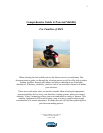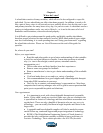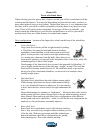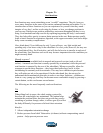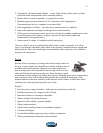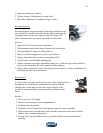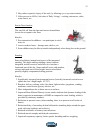
3
Chapter I:
Where do I start?
A wheelchair consists of many variables, which all need to be configured to a specific
individual. No two wheelchairs are alike when done properly. In addition, it needs to fit
like a pair of shoes, since it will not only act as a mobility device, but also the user’s seat
and primary interface for many hours every day, for years to come. A wheelchair can be a
gateway to independence and a very active lifestyle – or it can be the cause of a lot of
headaches and frustrations, when not selected properly.
It is difficult to get reimbursement for good quality and highly capable wheelchairs,
therefore proper selection first time around is crucial. While other medical issues might
now be overwhelming, it is worth spending time and “doing your homework” regarding
the wheelchair selection. Please see List of Resources at the end of this guide for
specifics.
So, where do you start?
Before your appointment:
• Read this and other guides to get a better understanding of what variables
to look for, and what features to consider. Learn what questions to ask and
why. (i.e. seat to floor height, control options, attendant controls,
transportation, etc.)
• Talk to other users and their families, hear their experiences
• Browse some user groups for feedback
• Browse manufacturer’s sites to get a better understanding of the available
products
• Visit local trade shows to see and try a variety of products
• Get recommendations for a good supplier and a knowledgeable therapist
from other FSMA members in your area
• Don’t be shy to contact your manufacturer’s representatives. Most large
companies have territory managers who will be glad to answer questions and
point you to respectable hospitals and clinicians.
Your appointment:
• It is important to work with a knowledgeable therapist and a reputable
dealer. If your child’s needs are involved, make sure you see a therapist who
is specialized in Assistive Technology and does wheelchair assessments on a
regular basis. There are only a handful of therapists who are very savvy in
technology – you can usually find them in larger hospitals and clinics in the
larger cities.
• A reputable and knowledgeable supplier will also be needed to ensure
careful follow-up, continued support and proper integration of technology.
• RESNA (The Rehabilitation Engineering Society of North America)
provides the only certification currently available to prove proficiency in
Assistive Technology. Their website provides a list of ATPs (Assistive



